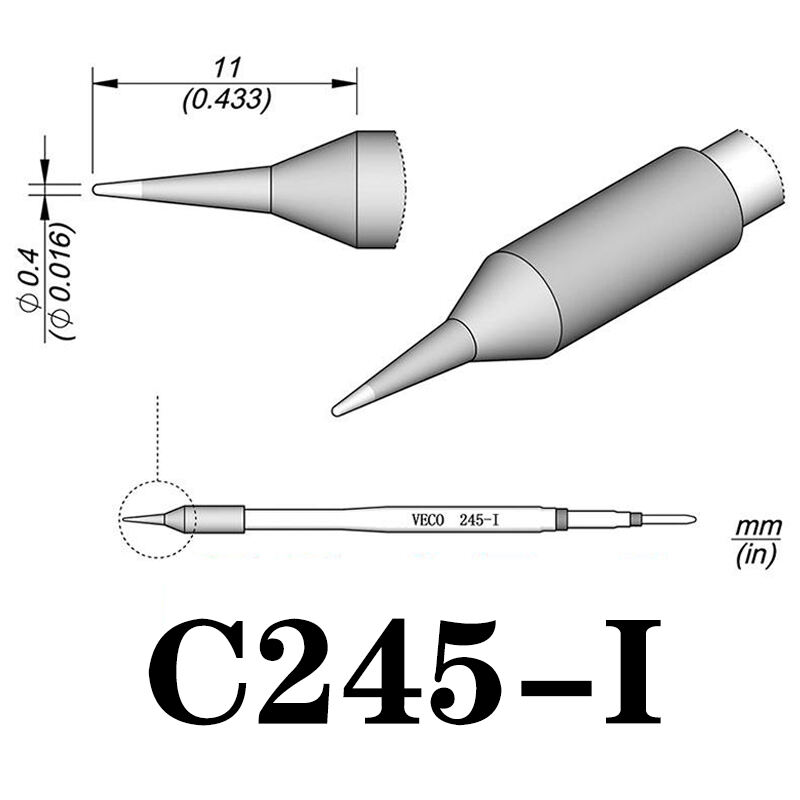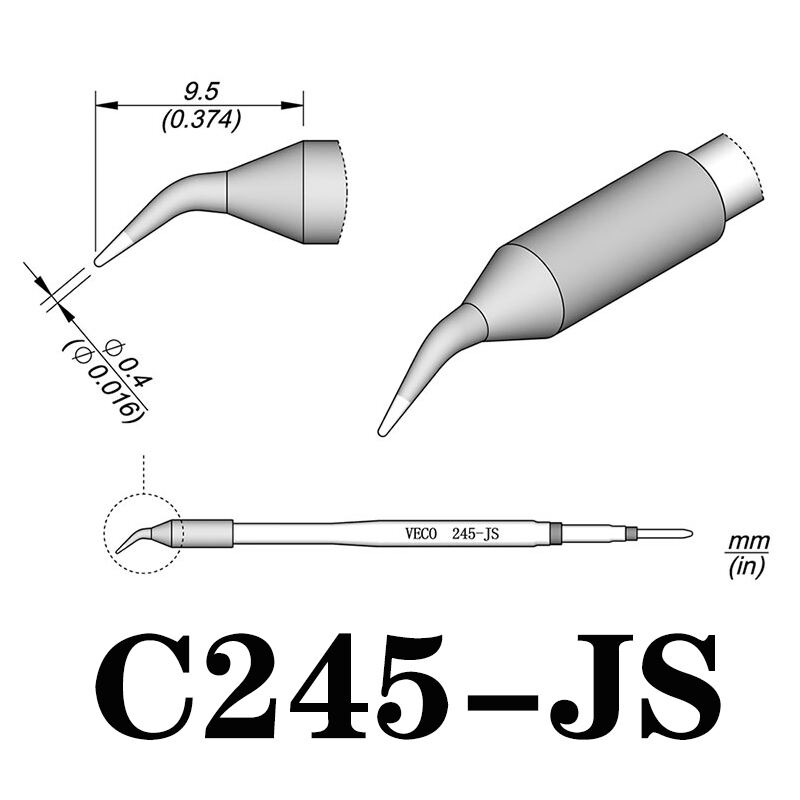Conical tips are recognized for their pointed design, making them perfect for precision soldering in tight spaces and delicate electronics. This renders them ideal for microcircuits and small components where meticulous work is necessary. The tapering shape ensures effective heat control, crucial to prevent damage to sensitive parts. Studies have demonstrated that using conical tips can enhance the quality of solder joints by providing accurate heat targeting, allowing for precise and efficient repair work.
Chisel tips are characterized by their flat, wide surface, which maximizes contact with the workpiece, leading to improved heat transfer suitable for larger solder joints. These tips are commonly utilized in automotive and heavy-duty applications where robustness and strength are vital. Research highlights that chisel tips can significantly reduce soldering time due to their efficient heat transfer capabilities, thus enhancing workflow in demanding environments where quick and reliable connections are required.
Bevel tips are designed for drag soldering techniques, offering versatility by allowing multiple components to be soldered in one seamless motion. These tips excel at swiftly connecting pins on integrated circuits, ensuring a reliable joint without the risk of excessive heat exposure. Their design facilitates a smooth soldering process, catering to both novice and seasoned users who seek efficient solutions without compromising quality and integrity.
Knife tips, with their sharp edge, are specifically designed to remove solder bridges, offering a focused point for precision work. They are particularly useful in densely packed circuit boards where accessibility is limited. Utilizing knife tips aids in maintaining circuit integrity by ensuring excess solder does not result in short circuits, thus safeguarding the functionality of intricate electronic assemblies.
Needle tips boast an ultra-fine design perfect for high-precision tasks, such as soldering tiny components or intricate circuit designs. They enable controlled and precise solder application, crucial in detailed soldering work. The effectiveness of needle tips in fine detail work has been consistently documented in expert reviews and user testimonials, underscoring their value in achieving meticulous and high-quality electronic repairs.
The choice of material for soldering tips significantly impacts their thermal efficiency and lifespan. Common materials include copper, which is renowned for its excellent thermal conductivity, and iron plating, used to extend the tip's lifespan. Selecting tips with higher thermal efficiency can lead to a cleaner soldering process, reducing energy waste and enhancing power management during operations. Studies indicate that material quality is a critical factor in optimizing soldering effectiveness, necessitating careful consideration when choosing tips.
The selection of soldering tip shape should match the component size to achieve effective soldering. Smaller components require finer tips, while larger ones need broader tips for efficient heat transfer. Adapting tip shape to the specific task helps prevent component damage and ensures clean solder joints. Experts emphasize that aligning the tip shape with the task at hand is fundamental in soldering best practices, enhancing both the quality and efficiency of the process.
Ensuring compatibility of soldering tips with soldering stations, such as Weller or Hakko soldering stations, is essential for optimal performance. Compatibility issues can cause delays and affect soldering quality, making it crucial to verify that the tips match the specific soldering stations and handles being used. Matching the correct tools can prevent frustration and enhance the overall efficiency of soldering projects.
The C245 Universal Fit Tip epitomizes versatility, allowing professionals to adapt to various applications without sacrificing performance. Its robust construction not only enhances durability but also renders it a cost-effective option for those in the industry. Users frequently commend its adaptability, noting its efficacy in tasks ranging from precision work to heavy-duty soldering. This flexibility makes it a go-to choice among professionals who work with diverse soldering requirements.

Engineered for exceptional heat transfer, the C245 Ultimate Performance Tip is a staple in high-demand environments, enabling rapid heat-up and consistent performance. This tip is particularly prized in settings that require quick soldering speeds without compromising quality. Performance assessments indicate that the C245 tip can significantly reduce soldering time, making it an ideal option for high-output workspaces where efficiency is imperative.

The C245 Professional's Choice Tip is designed specifically for chip-level maintenance, offering unmatched precision in delicate repairs. With high-quality craftsmanship as its hallmark, this tip is especially effective for intricate repairs and the maintenance of fine electronics. Users consistently express satisfaction with the tip's performance in maintaining electronics at the chip level, solidifying its reputation among professionals.

To ensure the longevity of soldering tips, proper cleaning techniques are essential. Regular cleaning with brass wool or a damp sponge can effectively remove oxidation, which negatively impacts heat transfer and solder quality. According to experts, maintaining a consistent cleaning routine can significantly enhance the performance of soldering iron tips, ensuring optimal functionality for your soldering projects. Clean tips not only improve the quality of solder joints but also prolong the life of the equipment, saving costs in the long run.
Correct storage practices are vital to prevent oxidation from degrading soldering tips. It is recommended to store tips in a dry, cool environment to minimize exposure to air and moisture, which can cause corrosion. Using tip covers or placing the soldering iron in a designated stand when not in use are effective methods to reduce ambient exposure. By following these practices, users can maintain the functionality of their soldering tips and extend their operational life, ensuring consistent performance over time.
Recognizing when to replace soldering tips is crucial for maintaining soldering efficiency and quality. Signs of wear include discoloration or a rough texture, which can lead to poor soldering results. Experts suggest replacing tips that no longer retain solder properly or show visible damage. Implementing a regular replacement schedule tailored to the frequency of usage can ensure that soldering tasks are completed reliably, without the drawbacks of faulty equipment. This proactive approach helps maintain high standards in electronic assembly and repair activities.
 Hot News
Hot News